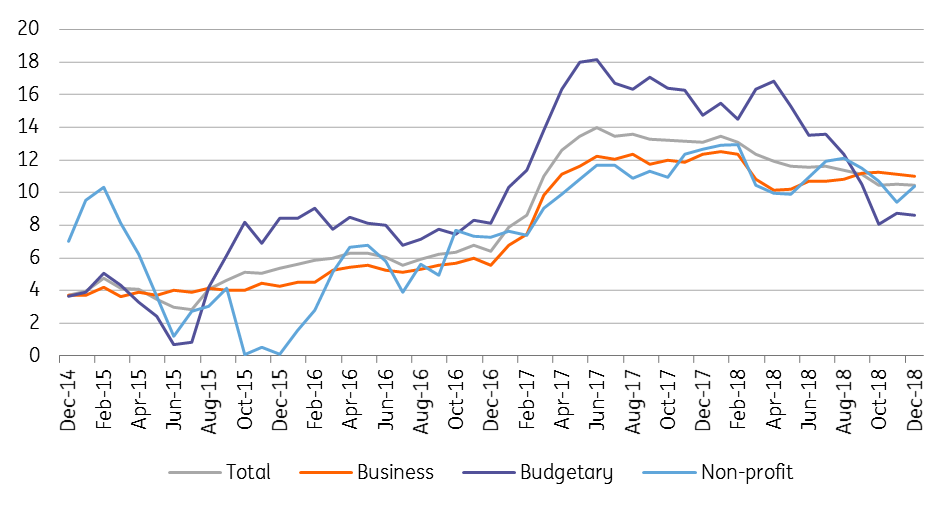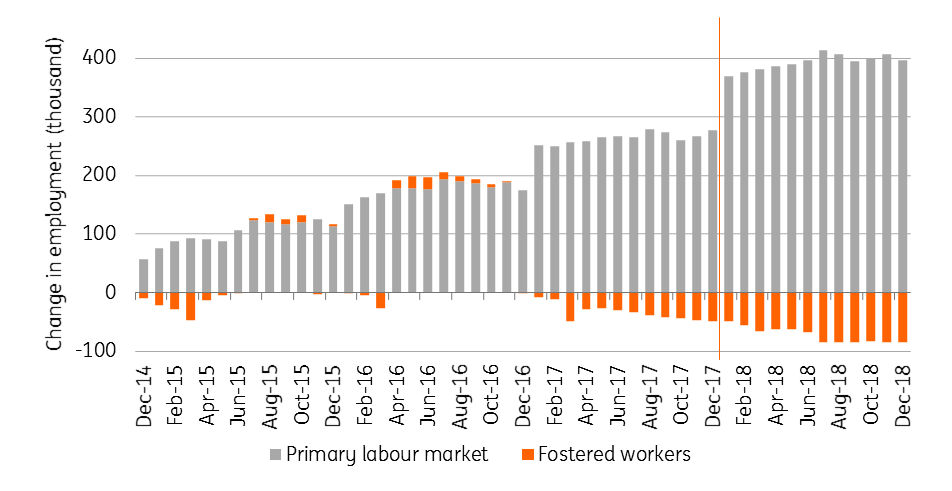Hungary: Labour shortage pushes wages higher
Net average wages increased by 11.3% year-on-year in 2018 as a whole, while real wage growth showed a more significant slowdown to 8.2% on a yearly basis due to the strengthening in inflation
| 10.2% |
Net wage growth (YoY)Consensus (10.3%) / Previous (10.4%) |
| Worse than expected | |
Hungarian average gross and net salaries grew by 10.2% YoY in December, helping average wage growth to remain in double digit territory at 11.3% YoY in 2018 as a whole. This is a minor slowdown to the previous year’s 12.9% salary increase. When it comes to real wages, the significant pick up in consumer prices has taken a toll, with growth decelerating from 9.9% in 2017 to 8.2% YoY in 2018.
Wage growth in the private sector has come in stronger than in the public sector for the fifth time in a row, but taking into consideration the whole year, both sectors showed double-digit improvement at 11% and 12%, respectively.
Wage dynamics (3-month moving average, % YoY)

Labour demand on the primary labour market increased further by 27k between January and December, showing a 0.9% rise. The number of fostered workers dropped by 36k, thus the total figure came in a bit lower.
Labour market trends (%)

Looking forward, it is really hard to estimate the outlook for wages in 2019, as the Statistical Office is changing its methodology from January. Another important consideration is the huge makeover in fringe benefits, as the government has increased taxes on these. It should push companies to compensate affected workers in their salaries, at least partially, but at the end of the day, due to the different taxation, workers will face a lower increase in real disposable income than the official wage statistics will show. Finally, real wage growth is expected to show further slowdown in 2019 due to rising inflation.
This publication has been prepared by ING solely for information purposes irrespective of a particular user's means, financial situation or investment objectives. The information does not constitute investment recommendation, and nor is it investment, legal or tax advice or an offer or solicitation to purchase or sell any financial instrument. Read more
Download
Download snap